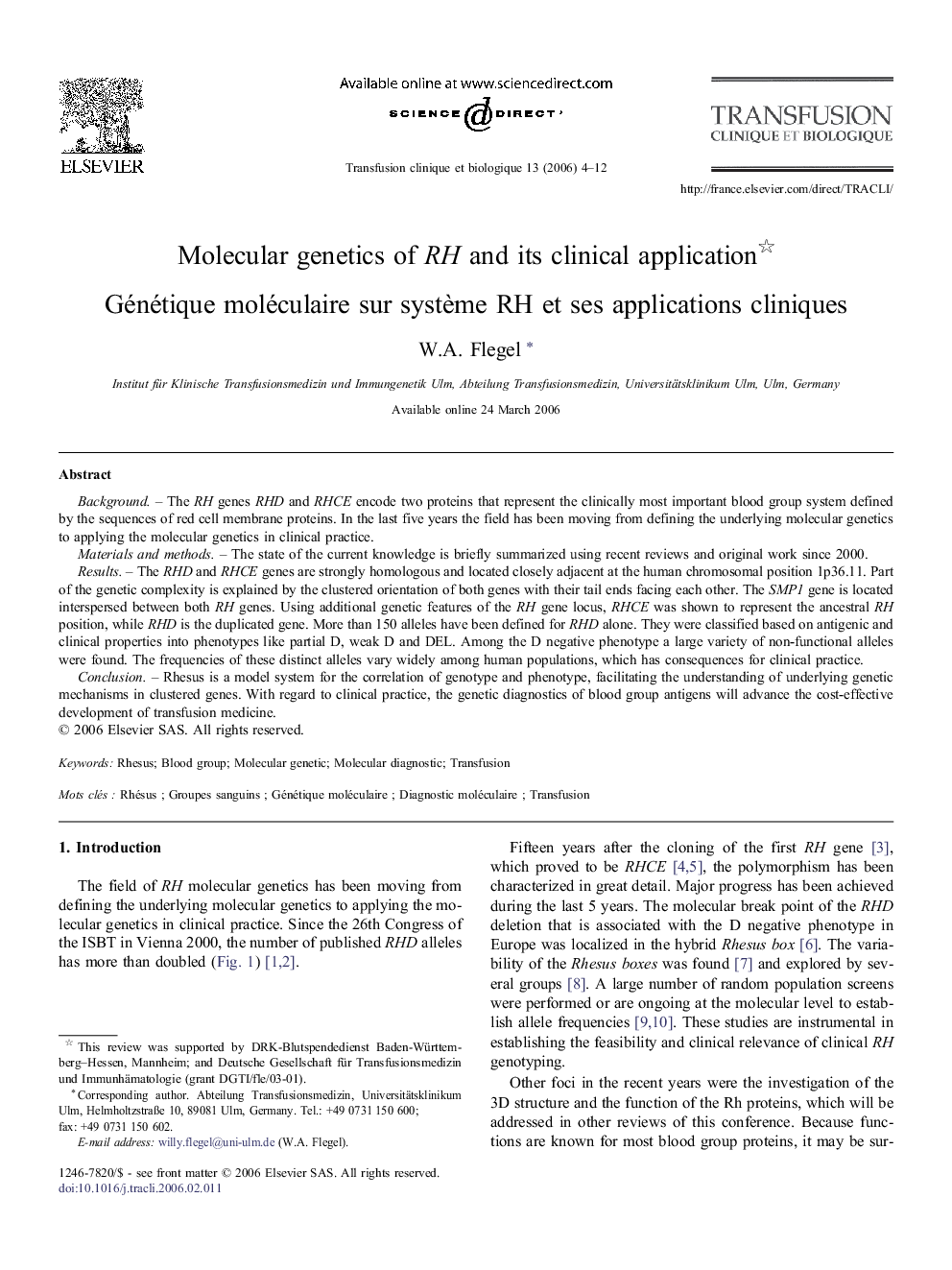| Article ID | Journal | Published Year | Pages | File Type |
|---|---|---|---|---|
| 1105960 | Transfusion Clinique et Biologique | 2006 | 9 Pages |
BackgroundThe RH genes RHD and RHCE encode two proteins that represent the clinically most important blood group system defined by the sequences of red cell membrane proteins. In the last five years the field has been moving from defining the underlying molecular genetics to applying the molecular genetics in clinical practice.Materials and methodsThe state of the current knowledge is briefly summarized using recent reviews and original work since 2000.ResultsThe RHD and RHCE genes are strongly homologous and located closely adjacent at the human chromosomal position 1p36.11. Part of the genetic complexity is explained by the clustered orientation of both genes with their tail ends facing each other. The SMP1 gene is located interspersed between both RH genes. Using additional genetic features of the RH gene locus, RHCE was shown to represent the ancestral RH position, while RHD is the duplicated gene. More than 150 alleles have been defined for RHD alone. They were classified based on antigenic and clinical properties into phenotypes like partial D, weak D and DEL. Among the D negative phenotype a large variety of non-functional alleles were found. The frequencies of these distinct alleles vary widely among human populations, which has consequences for clinical practice.ConclusionRhesus is a model system for the correlation of genotype and phenotype, facilitating the understanding of underlying genetic mechanisms in clustered genes. With regard to clinical practice, the genetic diagnostics of blood group antigens will advance the cost-effective development of transfusion medicine.
